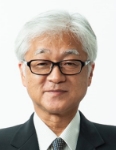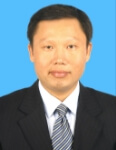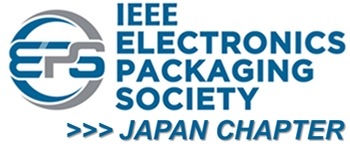
Keynote Lectures
 System and Interconnect of the Supercomputer Fugaku
System and Interconnect of the Supercomputer FugakuYuichiro Ajima
Fujitsu
Abstract:
The performance of supercomputers has improved at a rate exceeding Moore's Law due to their increasing system scale and packaging density. In recent years, as the pace of transistor density improvement has slowed, high-density packaging has become increasingly important for improving supercomputer performance. The supercomputer Fugaku is the world's fastest supercomputer with approximately 160,000 tightly coupled processors and has been ranked first in the world in four major HPC benchmark tests since 2020. Fugaku consists of 432 racks with up to 384 CPUs and has double-precision floating-point performance of up to 537 peta operations per second, memory I/O bandwidth of up to 163 peta bytes per second, and network injection bandwidth of up to 6.5 peta bytes per second. This presentation describes the system configuration and interconnects of Fugaku. Fugaku's CPU A64FX contains 48 Fujitsu-designed arm cores with Scalable Vector Extension instructions and 32 GB of high-bandwidth HBM2 memory in the same package. The specially designed Tofu Interconnect D, consisting of six network interfaces and a 16-port network router, is built into the A64FX CPU. The network router has 10 ports with 56 Gbps links. Each port is directly interconnected with other CPUs to form a 6-dimensional mesh/torus network. The building block of the network is up to 2 x 2 x 4 x 2 x 3 x 2 in size and occupies half of a single rack. An average of 7.5 of the 10 ports on each node are electrically connected within a building block, while the remaining 2.5 ports are optical connections between building blocks. The size of the entire Fugaku network is 24 x 23 x 24 x 2 x 3 x 2. Some building blocks contain only half of the nodes, and the network size for each such building block is 2 x 1 x 4 x 2 x 3 x 2. This presentation will also include the NGACI community activities discussing the next-generation advanced computing infrastructure.
 Advances in WBG Power Device Packaging by Sinter Joining and Thermal Management
Advances in WBG Power Device Packaging by Sinter Joining and Thermal ManagementKatsuaki Suganuma
Osaka University
Abstract:
The market of new generation WBG power semiconductors has begun to bloom, including SiC and GaN. GaN is also expanding its market to high-power LEDs and to high-speed communications in post-5G. Since heat conduction, electrical conduction, and reliability of high-lead solder that have been used in the past are inferior, and since it cannot be used in the first place due to their durability and heat resistance in the temperature range exceeding 150 ��C, the appearance of new bonding materials is desired. Mass production of Ag sinter joined SiC devices with excellent characteristics has already started, and it is becoming a real technology. Although high pressure is still used in the market, since the sintering mechanism is understood, sufficient bonding characteristics have been obtained by low-pressure bonding using inexpensive particles of micron to submicron meter size at the stage of pursuing excellent cost performance. As Ag-sinter joining enables bonding in atmosphere, low pressure, large area, and dissimilar materials without any plating, it can be applied to high performance TIM for heat dissipation that enables an excellent heat dissipation structure. Now a day, the main battlefield for material development has expanded from Ag particle sintering to Cu particle sintering, but there are great expectations for Cu direct bonding not only to power semiconductors but also to advanced semiconductors. If one would understand that process handling of sinter joining is different from that of solders, he can obtain outstanding cost performance and reliability out of sinter joining technology. There is no doubt that the sintered joining technology is a new generation joining technology that replaces solders, and it is expected that its application field will expand further in the future.
 The Hard-tech Evolution for The Future of Computing ? Bits/Neurons/Qubits
The Hard-tech Evolution for The Future of Computing ? Bits/Neurons/QubitsShintaro Yamamichi
IBM Research -Tokyo
Title :
Abstract :
Beyond many restless efforts to continue to improve the functionality density in the current digital computing system, we are entering a quite new computing era where we will experience much more energy-efficient solutions, as well as completely new calculation paradigms based on fundamental physical phenomena. This evolution, especially in the hardware technology, will lead us to the concept of the future of computing built on three technology foundations called bits, neurons, and qubits.
The bits represent the current computing element. As the lateral device scaling looks getting saturated, 3D integration will play a main role not only for the packaging structure, but also for the transistor device structure. 3D-stacked nanosheets and vertical transport FET are reported as examples. The neurons represent the brain-inspired element, and two approaches are intensively studied. One is to achieve the low power consumption by reducing the precision in the logic circuit, and this approach is already realized for the next generation CPU for the mainframe. Another approach is to use a non-volatile resistive material as an analog element representing the weight of the neural network. This has a challenge to integrate a new material into the current silicon process, but a chip-level integration by 14-nm technology has already reported. The qubits, as the 3rd foundation, represent an idea of the combination between information and quantum physics. This unique idea requires both hardware and software innovations, and a system utilizing the superconducting qubits is installed in Kawasaki city in Japan and running for users. Unique performance indicators for the quantum systems in terms of scale, quality and speed will be introduced.
 Ultrafast Laser Nanojoining and Its Applications in the Micro-nano Device Interconnection
Ultrafast Laser Nanojoining and Its Applications in the Micro-nano Device InterconnectionGuisheng Zou
Tsinghua University
Abstract :
Nanojoining is emerging direction in the last ten years in the discipline of welding and joining, involving the materials joining of nano-nano, nano-micro, nano-macro and nano-micro-macro meterscale. It includes the two research fields, i.e., nano-materials interconnection and joining using nanomaterials, and plays a more and more important role in the electronic packaging interconnections for micro-nano components�f fabrication and their system integration. The nanojoining based on ultrafast laser manufacturing is a promising direction, since the ultrafast laser possesses unique features such as precise controlling of heat input, outstanding focusing ability, non-linear absorption and ultra-high peak power. Firstly, this report will briefly introduce the recent research progress and applications in nanojoining field. Then the report focuses on two aspects. One is the joining/interconnection of nanomaterials, including nanoparticles, nanowires and nanosheets with a homogeneous or heterogeneous assembly, through the ultrafast laser irradiation, and its applications in the high performance manufacturing of new-style micro-scale or nano-scale principle devices. Another one is the novel low temperature sintering bonding technology for high temperature service using thin film composed of nanoparticle prepared by ultrafast laser deposition and its high power device packaging interconnection applications. Finally, the trend of nanojoining research and applications will be expected.




